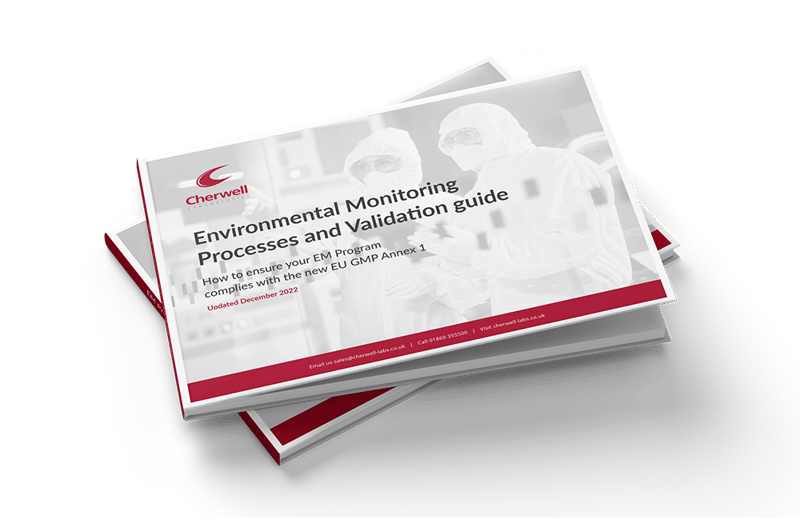GOSH Pharmacy Unit prevents spore contamination prior to compounder validation with multi-layer packaging solution from Cherwell Laboratories
-
0% contamination events recorded since adoption of new packaging solution
-
Efficiencies achieved in pharmacy workflow due to reduced ‘false’ compounder system failures
-
Source of contamination identified and validation processes adapted
-
Safer laboratory environment due to reduced use of toxic sporicidal spray
-
Cherwell packaging easy to handle and remove
-
Time saved due to reduced number of disinfection steps
Great Ormond Street Hospital Pharmacy Unit: Bacillus Species Contamination of TSB units
Great Ormond Street Hospital (GOSH) is famous for its focus on the health and wellbeing of children and young people. In 2017, its Pharmacy Unit experienced a series of media fill simulation failures from multiple operators, resulting in the contamination of filled tryptic soy broth (TSB) units with Bacillus species. GOSH Pharmacy Unit urgently needed to identify the source of the contamination in order to mitigate any risk to patient safety.
Despite adherence to the Guidance for Aseptic Transfer Processes in the NHS: Addressing Sporicidal Issues report, Bacillus species had been transferred to the Grade A environment in which compounding of parenteral nutrition was executed. GOSH Pharmacy Unit conducted an investigation into the source of the contamination, to evaluate the risk to asepsis of patient doses and to identify appropriate corrective and preventative action (CAPA) measures to reduce the risk.
Aseptic Media Fill Simulation Procedure Investigation
During the GOSH investigation extensive microbial samples were obtained from different surfaces within Grade B and Grade A environments. Bacillus species were isolated exclusively from the surfaces of the large volume TSB bottles, transferred in for use in the aseptic process simulations.
These bottles were received in cardboard cartons and held in an unclassified storeroom until required. Cardboard is known to be a potential reservoir of bacterial and fungal spores and is therefore kept away from the pharmacy cleanroom facilities.
Under the current validation process each bottle, on removal from the cardboard, was sprayed with 70 percent industrial methylated spirits, wiped and placed in the transfer hatch to a grade C cleanroom. The bottles were also sprayed and wiped with a sporicidal disinfectant before being placed in a transfer hatch for transfer into a grade B cleanroom.
The contents of the large volume TSB bottles were aseptically transferred during filling, via the insertion of a large bore spike pushed through the rubber septum in the cap of the bottle.
The existing validation process included monitoring of compounder operators using aseptic process simulation validation, to demonstrate asepsis of the process and the sterility of filled products.
Contamination events resulted in immediate cessation of compounding by the operator concerned, followed by retraining the operator in the aseptic liquid transfer.
Findings: Unexpected Bacillus Species Contamination Risks Discovered
The contamination was not attributed to the operator or a lack of competency. However, despite the use of sporicides, GOSH determined that it was feasible for Bacillus spores on the TSB bottle surface and bung to survive disinfection steps during transfer to the compounder. The spray and wipe steps were determined to reduce the risk of contamination as bottles are transferred, but increased handling at each stage raised risk.
Additionally, the large bore spike used to transfer contents of the TSB bottles had a relatively large surface area compared to a needle used for transfer of smaller volumes. This meant contaminants that evaded disinfection, such as those under the edge of the collar, could be disturbed and introduced into the bottle at this stage.
Samples from multiple sites within the laboratories and laminar flow cabinet housing the compounder, revealed Bacillus species were present on the bungs, collars and surface of 500 mL TSB medium bottles used for the validation, suggesting this was the source of contamination. It was concluded that the most likely explanation was that Bacillus spores on the bottle surface were surviving disinfection steps during transfer to the compounder, and being introduced into the TSB bottles during transfer via the large bore spike.
The Cherwell Laboratories Triple-wrapped TSB Bottle Solution
Cherwell developed a sterile, triple-packaged TSB product designed specifically to help GOSH avoid Bacillus contamination happening again in this way. The Royal Pharmaceutical Society recommends the use of multiple layers of sterile packaging to reduce the need to disinfect at each transfer stage, yet TSB in such a presentation was unavailable.
Cherwell’s solution was to design a prototype of bottles containing autoclaved TSB media. Each bottle was contained within two heat-sealed bags, with second irradiation indicator on the inner bag. This guarantees the bottle top collar remains sterile until the packaging is removed at point of use.
New outer packaging was also designed to avoid any future direct contact between bottle and cardboard. Each box was lined with polythene and contained eleven wrapped bottles. The twelfth was then packed outside the liner for easy removal and growth promotion testing, without the need to open disturb any other bottle. The whole box was also sealed and irradiated.
Results: Reduced contamination risk and a more efficient Pharmacy Unit for GOSH
During the four months directly following the adoption of the new packaging, GOSH reported zero cases of ‘false’ media fill contamination events. This has improved efficiencies within the Pharmacy Unit because it has not been necessary to retrain any compounder operators based on misleading results.
GOSH operators report that the packaging is very easy to handle and remove and they no longer need to wipe and spray the bottles. This saves at least half an hour in the transfer of the bottles to the cleanroom. It also significantly reduces the use of toxic sprays, resulting in a less hazardous and more environmentally-friendly laboratory.







